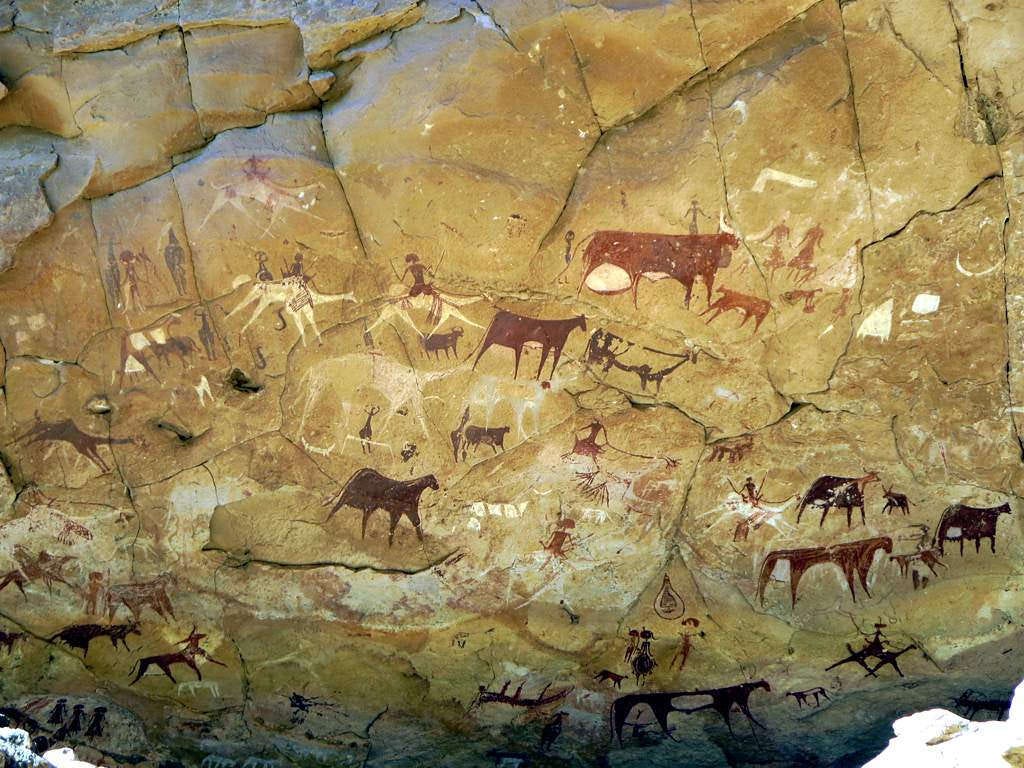NEWS
Exploring the Mysteries of Ancient Arts: A Journey Through Time

From the grand temples of Egypt to the intricate frescoes of the Minoan civilization, ancient art offers us a captivating glimpse into the lives, beliefs, and values of bygone cultures. As we delve into the world of ancient arts, we uncover not just artistic expressions but also the stories of human creativity and ingenuity that shaped our world.
Ancient Egypt: Symbols of Eternity
Ancient Egyptian art is renowned for its distinctive style and symbolism. Characterized by its use of hieroglyphs, vivid colors, and formal compositions, Egyptian art served both functional and religious purposes. Temples and tombs were adorned with elaborate murals and carvings intended to ensure a successful journey to the afterlife. The iconic image of the pharaoh, often depicted with a formal stance and a headdress, symbolizes power and divine rule. Artists meticulously followed conventions to maintain harmony and order, reflecting the Egyptians’ belief in cosmic balance.
The discovery of Tutankhamun’s tomb in 1922 provided a treasure trove of artifacts, including the famous gold mask, which continues to captivate the imagination. Each piece of art was carefully crafted to honor the gods and preserve the memory of the deceased, revealing a profound connection between the material and spiritual worlds.
Mesopotamia: The Cradle of Civilization
In Mesopotamia, one of the world’s earliest civilizations, art played a crucial role in both public and private spheres. The Sumerians, Akkadians, Babylonians, and Assyrians left behind a rich legacy of art that includes impressive sculptures, detailed cylinder seals, and intricately designed pottery. The Stele of Hammurabi, a basalt slab inscribed with one of the earliest and most complete legal codes, is not only a historical document but also a work of art that reflects the values of justice and order in ancient Babylon.
Mesopotamian art often depicted scenes of royal and divine authority, such as the victory stelae celebrating military conquests or the majestic statues of gods and goddesses. These works were intended to convey power and divine favor, and they played a key role in the public and religious life of the civilization.
The Aegean World: Artistry in the Islands
The art of the Aegean civilizations, including the Minoans and Mycenaeans, showcases a dynamic and diverse range of styles. Minoan art, primarily discovered on the island of Crete, is known for its vibrant frescoes and pottery. The frescoes of the Palace of Knossos depict lively scenes of bull-leaping and nature, reflecting the Minoans’ connection to their environment and religious practices.
The Mycenaeans, on the other hand, are recognized for their architectural achievements and ornate grave goods. The Mask of Agamemnon, a gold funeral mask, and the Lion Gate of Mycenae are examples of their sophisticated metalwork and monumental architecture. These artifacts provide insights into Mycenaean society, their heroic legends, and their complex burial practices.
Ancient Greece: The Birth of Classical Beauty
Ancient Greek art represents a pinnacle of classical beauty and form. The Greeks introduced concepts of proportion, balance, and idealism that have profoundly influenced Western art. Sculptures such as the Discobolus (Discus Thrower) and the Venus de Milo exemplify the Greek pursuit of perfection and the celebration of the human body. The Parthenon, with its Doric columns and intricate friezes, stands as a testament to the Greeks’ architectural and artistic prowess.
Greek art also includes significant contributions in pottery, with black-figure and red-figure techniques showcasing detailed mythological scenes and everyday life. These artworks were not merely decorative but also served educational and narrative functions, illustrating the Greeks’ emphasis on storytelling and the celebration of their deities and heroes.
Ancient China: Harmony and Elegance
Ancient Chinese art is marked by its emphasis on harmony, nature, and spirituality. The art of the Shang and Zhou dynasties includes intricate bronze vessels used in rituals, decorated with elaborate designs and inscriptions. These artifacts reveal the importance of ritual and the connection between the living and the ancestors.
The Tang and Song dynasties further advanced Chinese art with exquisite ceramics, landscape paintings, and calligraphy. The Tang dynasty’s glazed pottery, including the famous Tang tri-colored glazed figurines, highlights the era’s artistic innovation. Meanwhile, Song dynasty landscape paintings, with their emphasis on natural beauty and philosophical depth, reflect the era’s aesthetic ideals and reverence for nature.
Conclusion: A Legacy of Human Creativity
Ancient art from various civilizations provides a rich tapestry of human experience and creativity. Each culture’s artistic expressions reveal their values, beliefs, and societal structures, offering us a window into their world. By studying these ancient masterpieces, we gain a deeper appreciation for the diverse ways in which human beings have sought to understand and depict their existence through art. The legacy of ancient art continues to inspire and inform our contemporary understanding of history and aesthetics, reminding us of the enduring power of artistic expression across the ages.

The Hear UP is a leading technology publication house. Our origin dates back to 2016 as a small forum for technology enthusiasts. Since then, The Hear UP has transformed into a trusted source for emerging tech and science news.
The majority of our news is provided by staff writers. Other news is provided by news agencies and freelancers.
All of our contributors are members of the Society of Professional Journalists.
If you need to contact a news editor from The Hear UP you can find a list of email addresses on our contact page.
Our Organisation
The Hear UP










